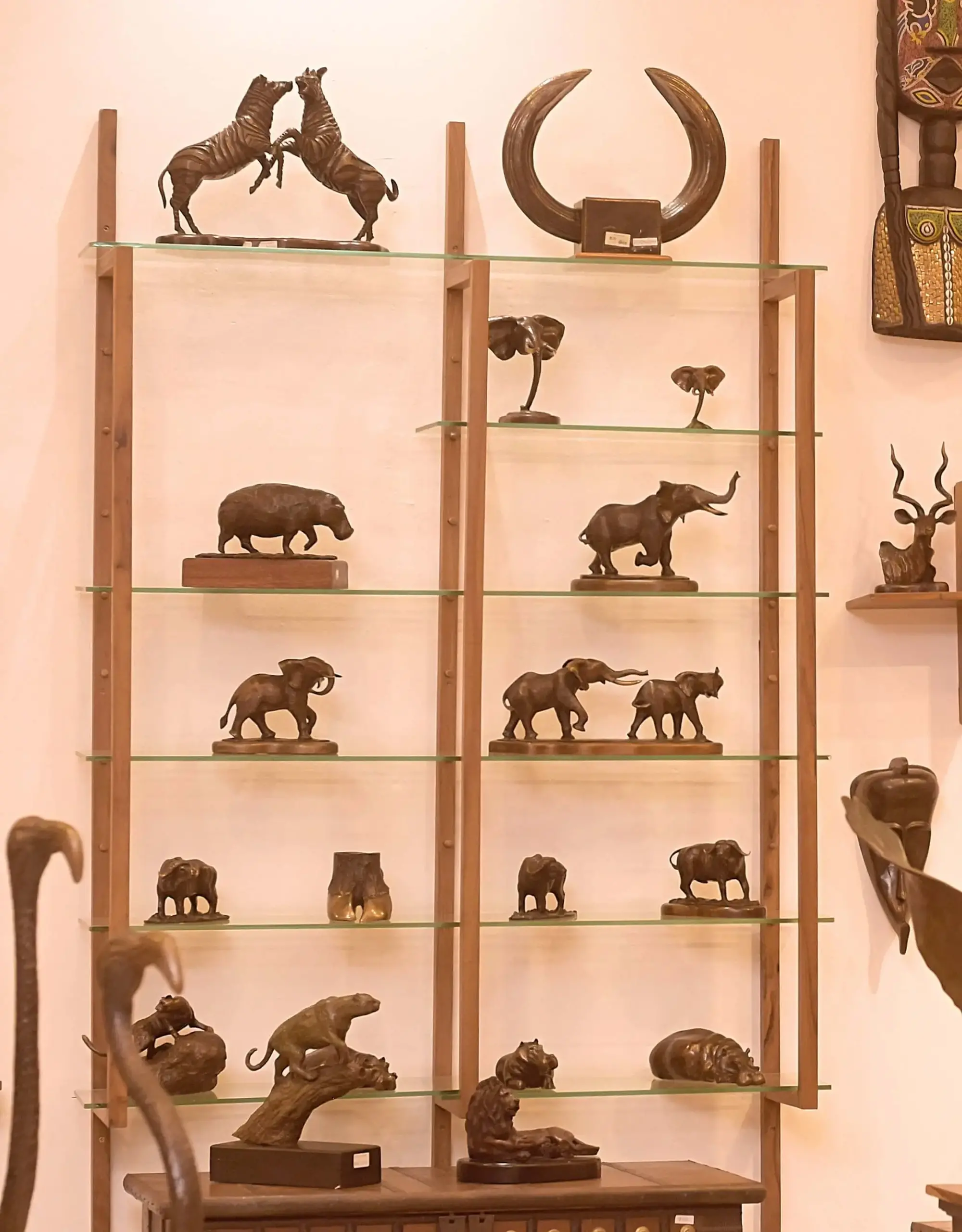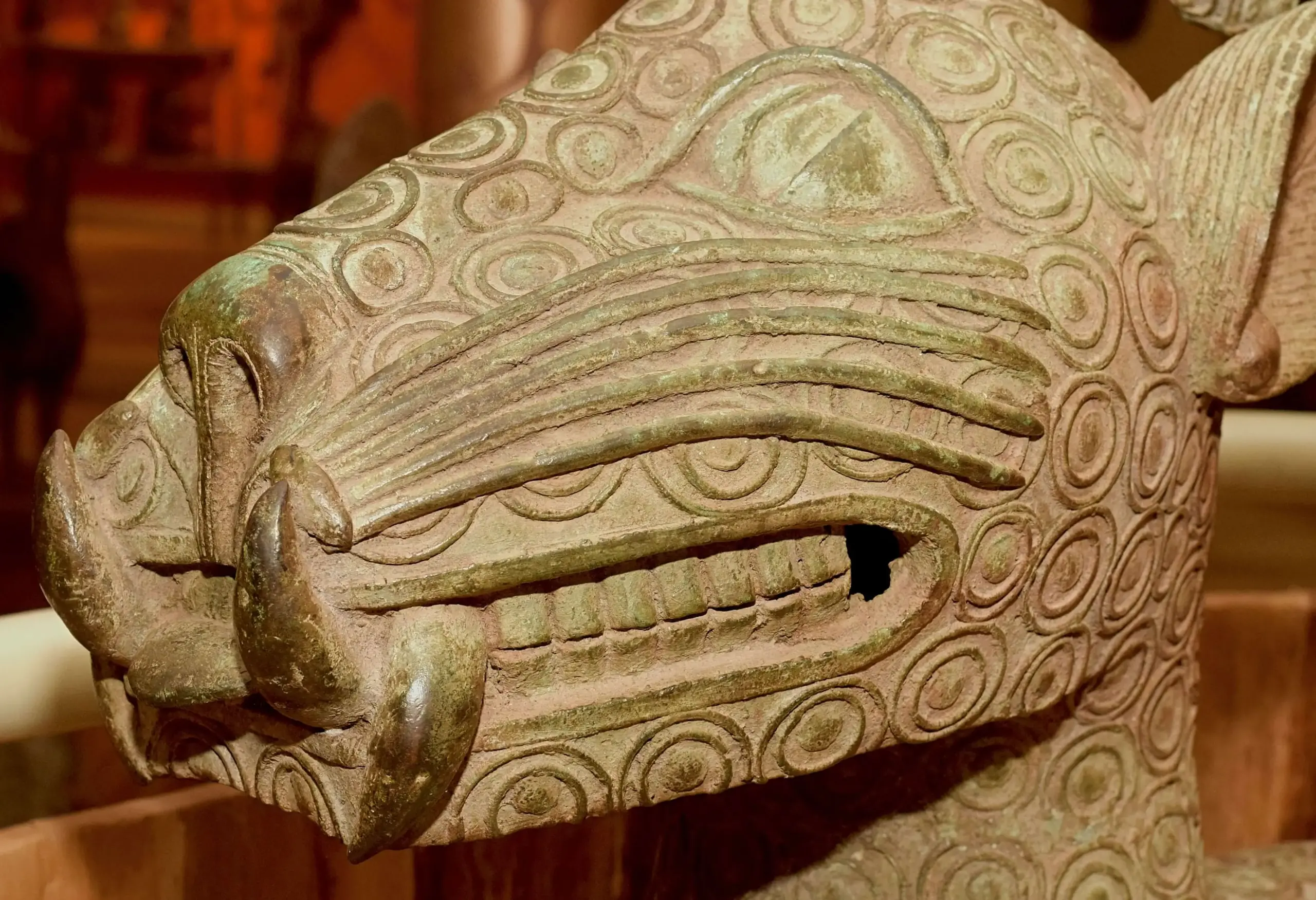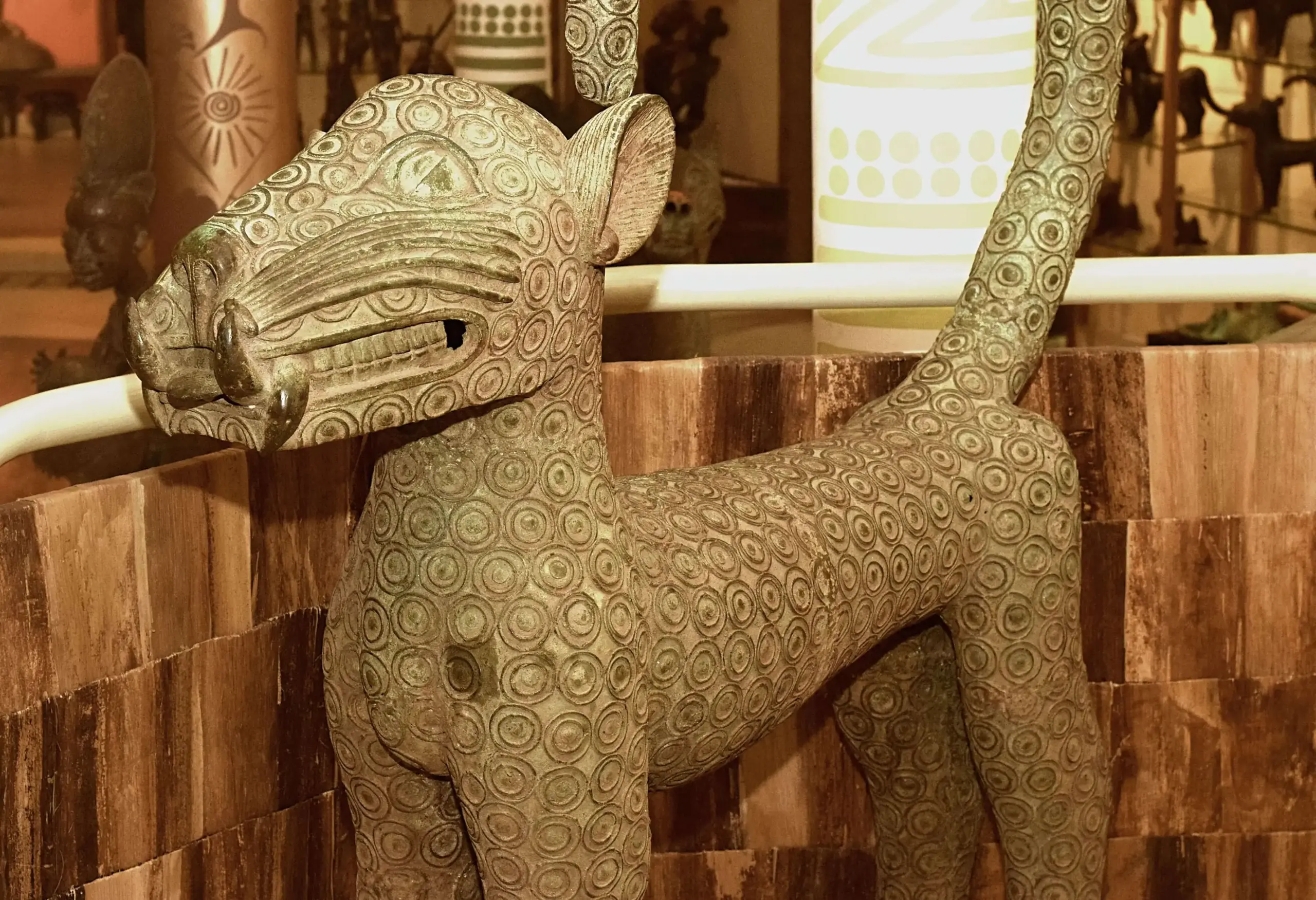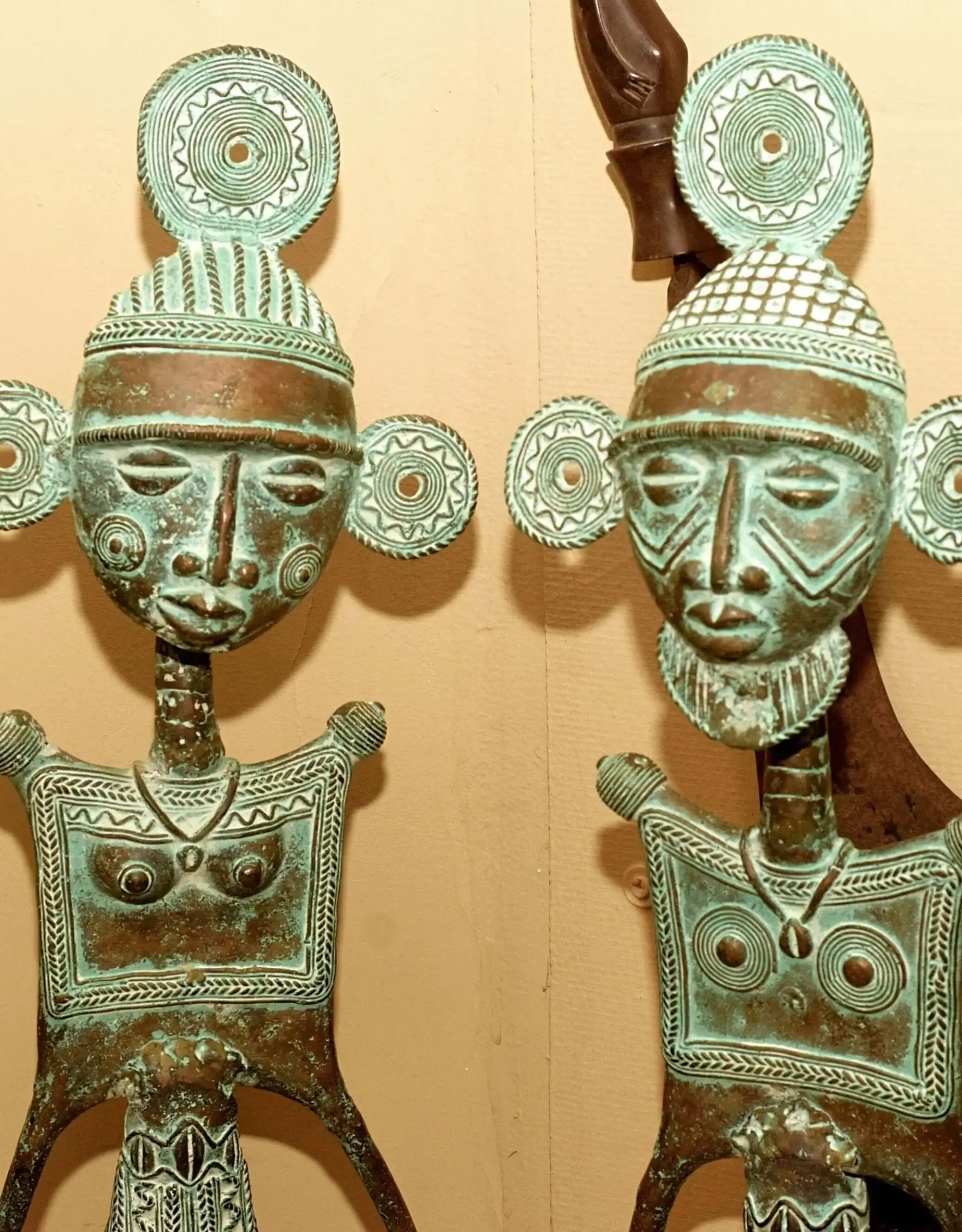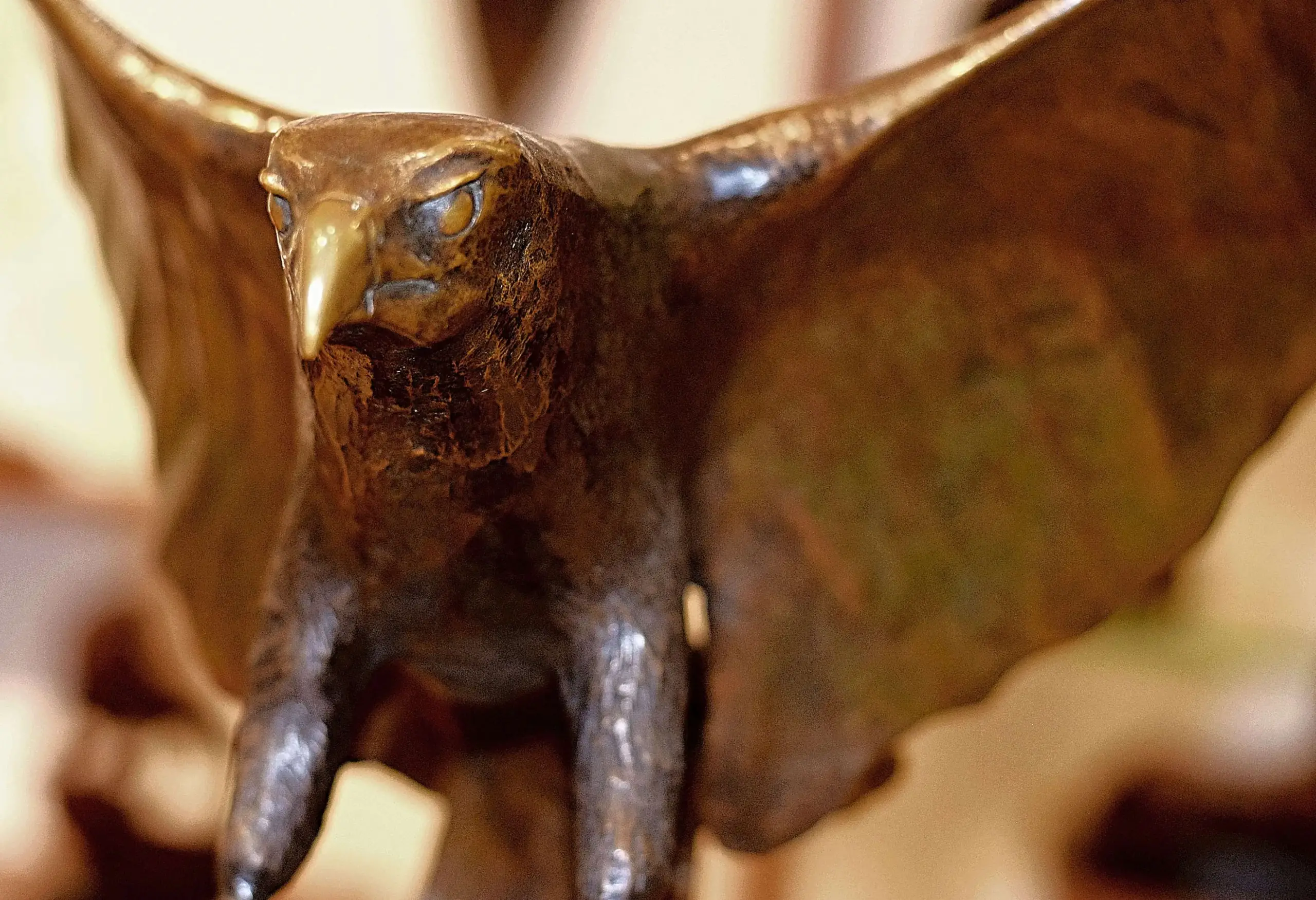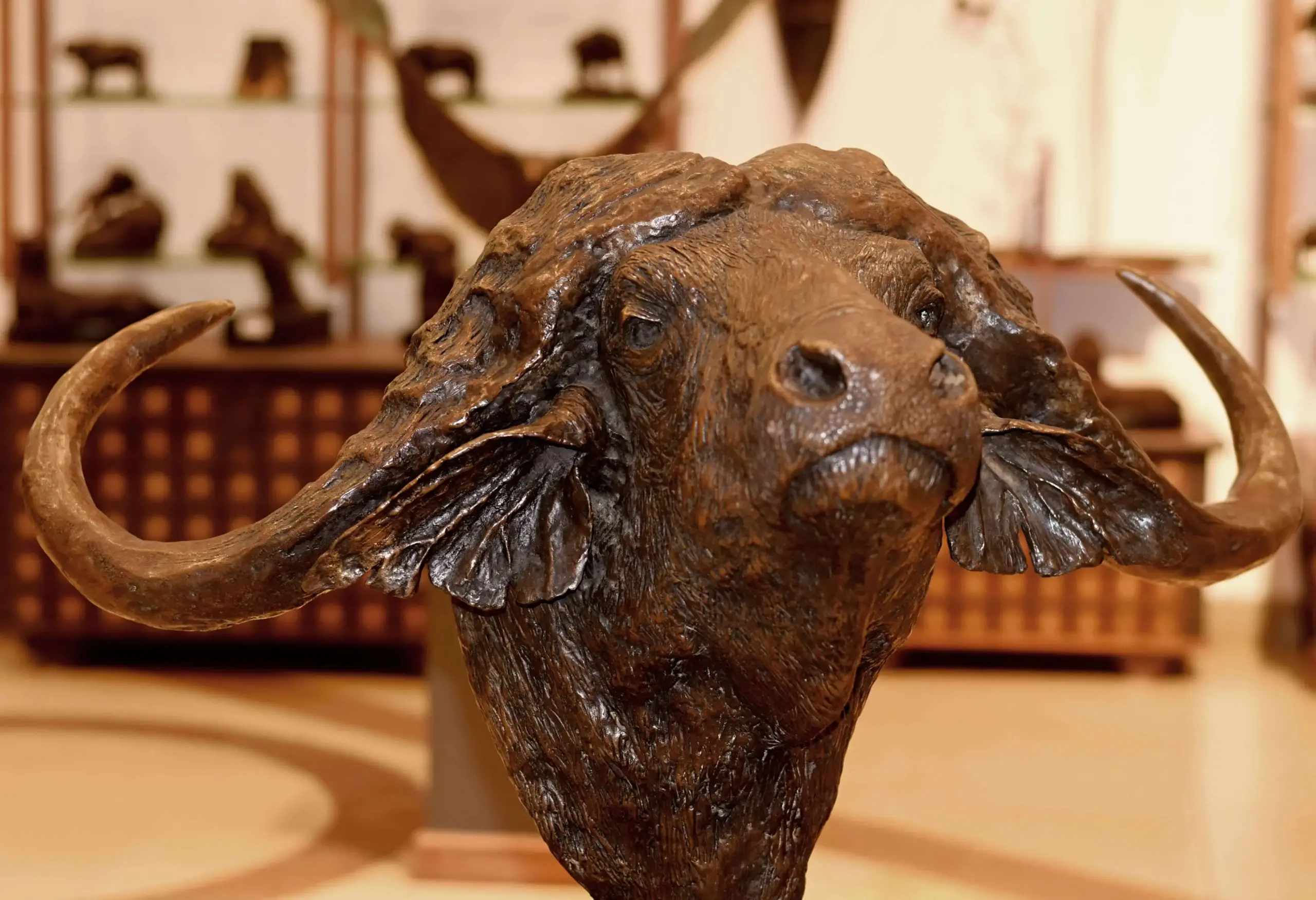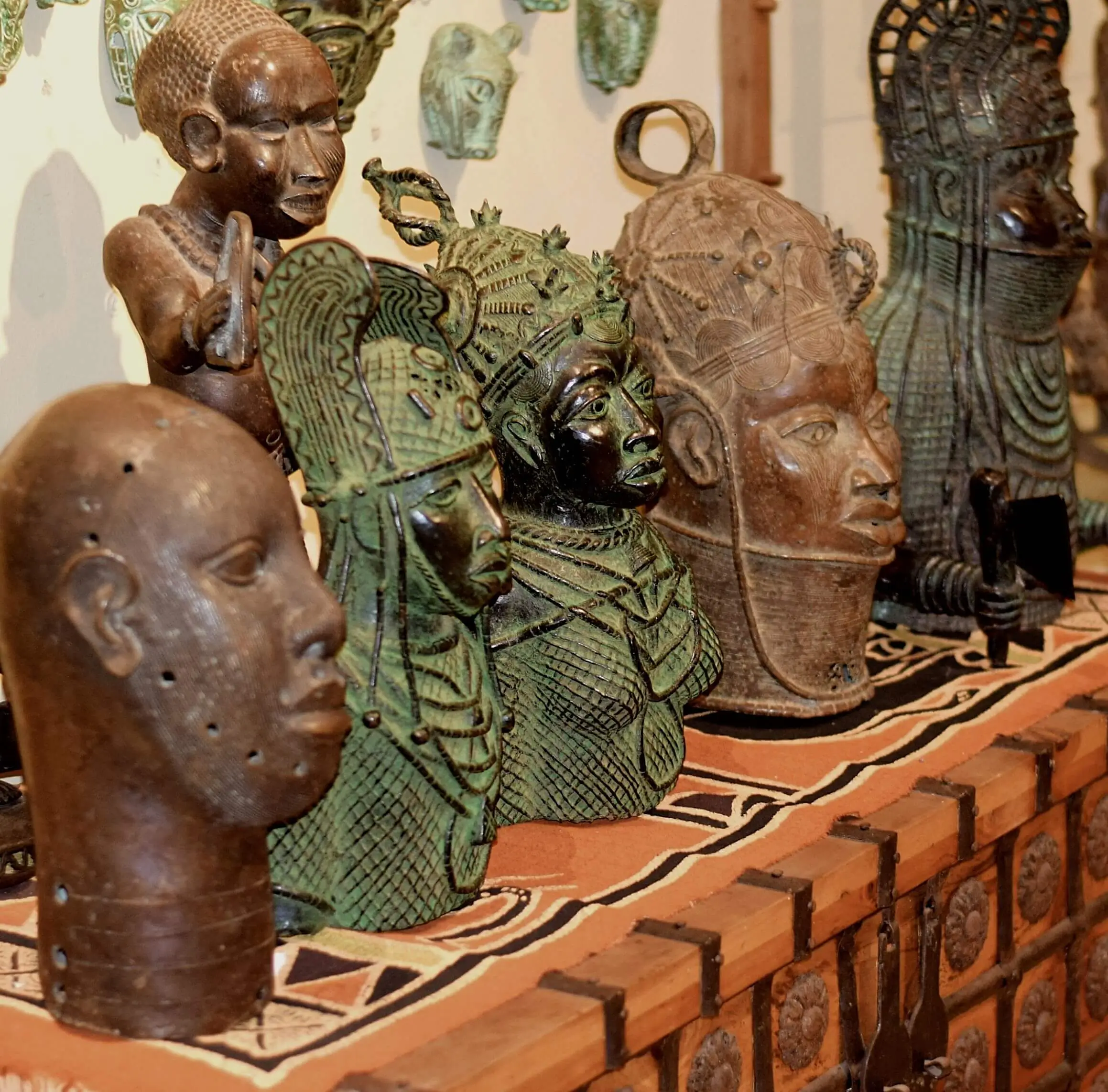BRONZE STATUES & ORNAMENTS
The Extraordinary Legacy of Benin Bronzes
The Kingdom’s Pinnacle
The Benin Bronzes narrate the grandeur of the Kingdom of Benin, a preeminent power in West Africa from the 13th through the 17th centuries. These artworks emerged under the patronage of the Oba (king), especially during the zenith of Benin’s influence between 1480 and 1620. Crafted primarily for the royal court, these pieces served not just as art but as historical records, capturing the kingdom’s dynastic tales and its interactions with neighboring entities.
Artistic Genesis
The inception of bronze casting in Benin is often traced back to Oba Oguola’s reign in the late 13th century. This craft was intricately linked to the kingdom’s spiritual and political life, with bronzes playing a central role in ancestral altars, commemorating past Obas and Queen Mothers, and supporting the legitimacy of newly ascended Obas.
Craftsmanship and Materials
Benin’s artists, belonging to specialized guilds, were masters of their trade, adept in handling materials like brass, bronze, ivory, coral, leather, and wood. Their creations ranged from commemorative heads and plaques to royal regalia and personal ornaments. Each piece was a testament to the sophistication and depth of Benin’s cultural and artistic life.
Iconic Creations
• Commemorative Heads: Celebrated the Obas’ reigns and were central to ancestral worship.
• Plaques: Adorned the royal palace, illustrating the kingdom’s history, including its battles and ceremonies.
• Royal Regalia: Embodied the majesty of coronations and royal ceremonies with intricate beaded crowns and swords.
• Figures: Captured the essence of Benin’s society, from warriors to musicians, in both bronze and ivory.
• Ornaments: Enhanced the splendor of the royal court with meticulously crafted jewelry.
Techniques of Timelessness: The Lost-Wax Casting
The lost-wax casting technique, pivotal to crafting the Benin Bronzes, highlights the artisans’ advanced skills. This process involves creating a wax model of the artwork, encasing it in a mold, and then melting the wax away to leave a hollow space. Molten metal is poured into this cavity, forming the sculpture upon cooling. This method enabled Benin’s artists to produce detailed and complex designs, showcasing a sophistication that greatly contributed to the bronzes’ distinctiveness and the kingdom’s rich artistic legacy. In fact, African Galleria features an array of modern wildlife sculptures created by artist who still follow this age old technique.
Cultural Impact
The Benin Bronzes stand out not only for their aesthetic beauty but as symbols of a rich, advanced civilization. Their existence predates European contact, challenging stereotypes and highlighting the region’s long-standing tradition of fine artistry, deeply influenced by the ancient Kingdom.
A Living Tradition
Today, the Benin Bronzes continue to fascinate and inform, representing a vital link to the past and a continuing source of inspiration for both historians and artists alike. They are a powerful reminder of the Kingdom of Benin’s splendor, its sophisticated society, and its enduring influence on African art. Join us in discovering the ancient craftsmanship and feast your eyes on the impressive series of bronze sculptures at our gallery.

